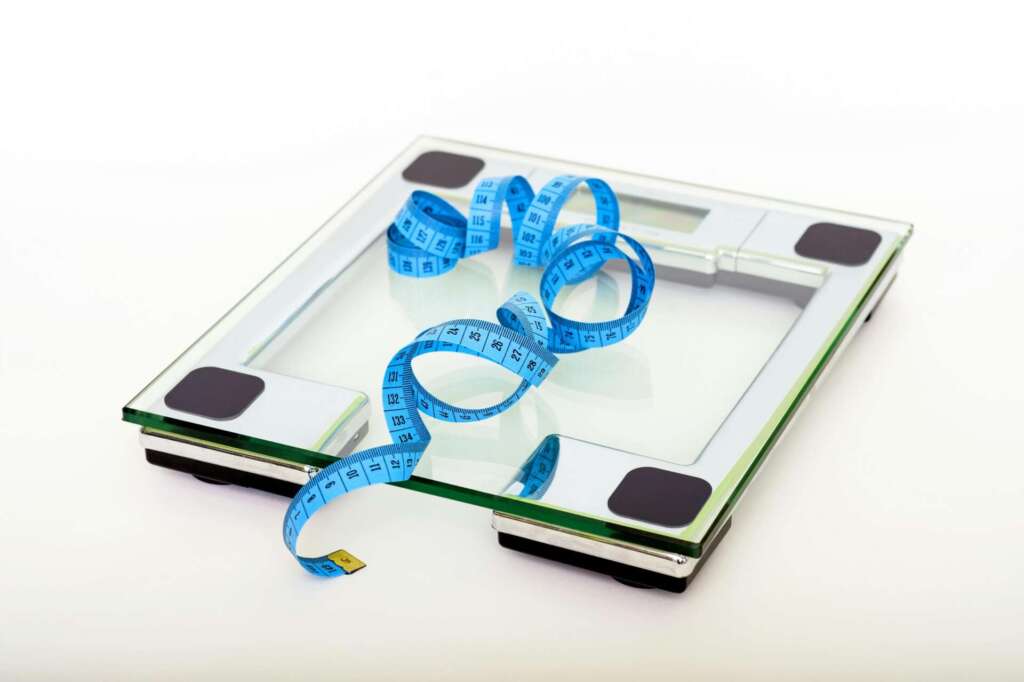Intermittent fasting diets, also called intermittent energy restriction, are eating patterns in which you alternate between eating and not eating. They are more about when you eat, fasting daily, and only eating within a specific window rather than what you eat.
This is flexible and has benefits like fat loss, improved metabolic health, better brain function and longer life.
🚫 But this method isn’t for everyone. 🚫
Read more to decide if this is for you.
Types of Intermittent Fasting
There are three main types of intermittent fasting:
- 16:8 [16-hour fasting period, eating within an 8-hour window]
- 18:6 [8-hour fasting period, eating within a 6-hour window]
- 24-hour [fast for 24 hours, once a week]
Does Intermittent Fasting Help With Losing Weight?

Time-restricted eating can be a tool for burning fat and losing Weight by creating a calorie deficit necessary to shed pounds. By limiting the eating window, intermittent fasting naturally reduces the opportunity to consume extra calories and, hence, weight management. You may also plan your meals more to help with calorie restriction and avoid binging.
Another benefit of intermittent fasting is that the fasting periods may improve metabolic health for some people by improving insulin sensitivity and fat burning. During fasting, the body often uses glycogen stores and stored fat for energy, hence weight loss.
Many find intermittent fasting easier to maintain than traditional calorie-restricted weight loss methods because it simplifies meal planning and reduces cravings. However, results vary, and it’s essential to pair intermittent fasting with a balanced diet of healthy foods for overall health and well-being.
How Long To See Weight Loss?
In reality, the time it takes for someone following an intermittent fasting diet to see weight loss varies from person to person. Some might see changes in the body in days and others in a few weeks. It depends on what you are doing it for and calorie reduction. It also matters what you measure results by–> improving concentration, energy levels or changing body weight.
A lot depends on your body, your diet during eating times, and your fasting schedule. For example, some do 16/8, fasting for 16 hours and eating within 8 hours. Others fast for a whole day once or twice a week.
What’s important to remember is choosing the intermittent fasting diet isn’t just about quick weight loss. So, while you might want to see fast results, the benefits of intermittent fasting that you may see, like better blood sugar control, improved blood pressure, or better heart health, will take a bit more time to show up.
Intermittent fasting alone isn’t enough for weight loss; a healthy diet and an active lifestyle are also important for staying strong and healthy.

The 18:6 Method
Remember, there are different types of intermittent fasting. Choosing which meal times to skip is important in your routine. Determine your short-term and long-term goals. If you work night shifts or long days, you may not fast on those days.
18:6 Intermittent fasting can help some. This method involves eating within 6 hours and fasting for 18 hours daily. It could have health benefits like boosting metabolism, weight loss, and controlling blood sugar. You may have more energy. However, results vary based on individual lifestyle, diet during eating windows, and how well you follow the fasting schedule.
This method is unsuitable for everyone as the fasting period lasts longer. It can affect insulin levels if you don’t get enough nutrients during your eating windows.
The 20:4 Method
20:4 intermittent fasting also known as the “Warrior Diet” involves a 4 hour eating window and 20 hour fast. As a doctor, I advise fasting, but it depends on your health and needs.
This is an intense fast and unsuitable for most people to do regularly. This method is not usually safe if you have health conditions like diabetes or high blood pressure, and the effects of intermittent fasting and weight loss may worsen your health condition.
With that in mind, people often ask how long it takes to see results. The longer the fast, the quicker you will see results as long as you eat healthy and control calories for the remaining meals.
How To Fast Safely
The food you choose and the days of the week you fast make a big difference in your results. To fast safely:
- Eat nutrient-dense foods during your eating windows. Foods rich in vitamins like calcium, iron, and vegetables are essential. Whole foods are usually best.
- Drink plenty of water.
- Do weight-bearing exercises regularly to keep muscles strong and bones healthy.
- Try a gentler way of intermittent fasting, like eating for 8 hours and not eating for 16 hours.
Always consult a doctor or nutritionist before starting intermittent fasting if you have health conditions or are elderly. This is not suitable for children. Women with a history of disordered eating, hormonal imbalance, or irregular menstrual cycles should seek professional guidance to ensure that fasting won’t worsen these conditions.
Consulting a healthcare professional will help you create a personalized intermittent fasting plan that is safe and effective for your heart, dietary needs and overall health.
Intermittent Fasting Meal Plans
You can stick to your regular diet, but these meal plans are designed for a typical intermittent fasting schedule of 16/8 (16 hours of fasting followed by 8 hours of eating).
Adjust according to your calorie needs and diet, e.g. vegan/vegetarian.
| Meal Plan | Meal 1 | Total Calories | Protein (g) | Carbs (g) | Fat (g) |
|---|---|---|---|---|---|
| Day 1 | |||||
| Breakfast (Skipped) | |||||
| Lunch | Grilled chicken salad, quinoa | ~450 | 30 | 40 | 15 |
| Snack | Greek yoghurt, mixed berries + honey | ~200 | 15 | 25 | 5 |
| Dinner | Salmon, steamed broccoli, brown rice | ~750 | 45 | 60 | 25 |
| Day 2 | |||||
| Breakfast (Skipped) | |||||
| Lunch | Turkey wrap, mixed greens | ~450 | 35 | 35 | 15 |
| Snack | Almonds, apple | ~200 | 5 | 20 | 15 |
| Dinner | Grilled shrimp, asparagus, wild rice and vegetables | ~750 | 40 | 70 | 20 |
| Day 3 | |||||
| Breakfast (Skipped) | |||||
| Lunch | Tuna salad, whole grain bread | ~450 | 30 | 45 | 15 |
| Snack | Cottage cheese, cucumber slices | ~200 | 15 | 15 | 5 |
| Dinner | Lean chicken stir-fry, mixed vegetables | ~750 | 50 | 50 | 25 |
| Day 4 | |||||
| Breakfast (Skipped) | |||||
| Lunch | Chicken Caesar salad, whole grain roll | ~450 | 35 | 30 | 20 |
| Snack | Hummus, carrot sticks | ~200 | 10 | 20 | 10 |
| Dinner | Baked cod, sweet potato, green beans | ~750 | 40 | 60 | 20 |
| Day 5 | |||||
| Breakfast (Skipped) | |||||
| Lunch | Egg salad, spinach wrap | ~450 | 30 | 30 | 20 |
| Snack | Peanut butter, celery sticks | ~200 | 10 | 15 | 15 |
| Dinner | Baked chicken, quinoa, mixed veggies | ~750 | 45 | 75 | 20 |
Remember to drink plenty of water throughout the day.
30 Day Fasting Plan to Lose Weight

If done right, 30 days of intermittent fasting can be effective. You can customize this to your liking; some prefer alternate-day fasting or choosing which days.
Most people start to see weight loss in a few weeks, but some may take a couple of months to notice significant changes.
The effectiveness and time it takes to see results from intermittent fasting varies. It depends on metabolism, Weight and diet. If you are overweight and start fasting, you may see faster results if your calorie intake drops drastically.
Many people report weight loss and mental clarity if they exercise safely. Steady blood sugar levels mean planning your meals carefully. On fast days, decide where you’ll get your nutrition and plan your exercise accordingly, like not running long distances during a fast period.
Note that intermittent fasting is more than just a weight loss tool. If done well and with a healthy diet, it can also improve overall health markers like blood sugar, cholesterol, and inflammation.
Consistency and a balanced diet during eating periods are crucial to getting the best results with intermittent fasting.
How Intermittent Fasting Worked For Me
As a doctor, I fast some days a week, which works for me. However, how many days I fast depends on my health, feelings, and energy needs. If I’m hungry, I break the fast➡️ I listen to my body. When I eat meals, I ensure they are balanced so I don’t miss out on any nutrients.
It works when I skip breakfast and focus on lunch, snacks and dinner. I eat between 12 and 8 pm a few days a week, so I use the 16:8 method. I also drink plenty of water and plan to exercise when I can. 💧🏋️♀️
To stay healthy, I also ensure I eat a mixture of protein, fat, and carbohydrates with plenty of fibre. I include lots of fresh vegetables with protein in every meal.
Why I stopped fasting
I stopped fasting seven days a week because my schedule is variable: 12-hour shifts, night shifts, and weekends. You have to tailor fasting to your schedule. For example, I don’t fast when working a 12-hour shift because I feel exhausted. I only fast when on an 8-hour shift schedule and if I had a good night’s sleep.
Whynight’sype of fasting might not be for you.
Fasting is not for everyone, especially those with health issues, pregnant women, older adults, underweight individuals or those taking certain medications. If you are in a high risk group, listen to your body and consult a healthcare professional or dietitian before starting any fasting routine.
Fasting can be triggering for people with eating disorders and may cause food anxiety. Understanding your body is critical. When I started, I wrote down my personal goals to create meal plans that fit my lifestyle. My goal was to increase bone mass and maintain muscle strength. A healthy body makes me feel my best and enjoy my work.
If you are on a vegan diet, have allergies or other dietary restrictions you need to adjust your diet to ensure you get enough protein and nutrients.
Patient Story: Laura’s IntermitteLaura’sing Journey

Laura, 35, has been looking to lose weight and improve her overall health. She’s an active Woman who loves to go on long hikes on weekends. After reading about intermittent fasting, Laura decided to give it a try. But she was worried about how fasting would affect her energy levels, especially during her weekend hikes. She came to me to ask for advice, and I referred her to a dietician.
Initial Consultation
Laura consulted with the dietician to create a fasting plan that suits her lifestyle and needs. The dietician recommends the 16:8 method where Laura would fast for 16 hours and eat during an 8 hour window. This method allows Laura to schedule her eating window to fit her hikes so she has enough energy for her physical activities.
Implementation and Adjustment
Laura starts her intermittent fasting and chooses an eating window of 11 am- 7 PM. She focuses on eating a balanced diet of whole foods, lean proteins, healthy fats, and plenty of fruits and vegetables. During our check-ups, I remind her to stay hydrated during her fasting hours.
On hiking days Laura adjusts her meals to include more complex carbs and proteins to fuel her long hikes. She plans her hikes in the morning so she can eat a nutritious meal as soon as her eating window opens.
Progress and Results
After a few months, Laura saw significant improvements. She lost body fat and felt more energetic and focused. Her weekend hikes are more enjoyable as she learns to fuel her body. Laura’s eating window makes her feel like she is depriving herself, as she includes all the food she enjoys, like dark chocolate.
Maintenance and Long-Term Success
Laura reached her weight loss goal and is now focusing on maintaining her Weight. She continues with the 16:8 intermittent fasting and finds it easy to incorporate into her daily routine. Her regular hiking and active lifestyle complement her fasting regimen and keep her fit and energized.
The dietician checks in with Laura regularly to monitor her progress and make adjustments. With my and the herdietician’s guidance, Laura stays on track with her healthy eating and active lifestyle.
Laura’s experience with intermittent fasting and her active lifestyle proves that with a well-designed plan that suits individual needs, you can lose Weight and maintain health. By consulting the right healthcare professionals and choosing a sustainable fasting method, Laura achieved weight loss and overall health.
She also does this from Monday to Friday. On weekends, she relaxes and eats healthy meals with her family but does not binge eat.
Intermittent Fasting by Age
This chart shows how intermittent fasting may vary in appeal across different age groups. The “Pop” clarity Index measures the relative popularity of intermittent fasting in each age group.

Intermittent Fasting For Women Over 50
This way of eating may be good for women over 50. If done safely, intermittent fasting can help women over 50 control their Weight, feel healthier, and reduce inflammation.
But there are things to consider. As women age their bodies change. This is especially true around 50 when women go through menopause. These changes can affect their Weight and health including bone density.
Before women over 50 decide if intermittent fasting is for them, they should make sure it doesn’t make them too tired or weak. It is also very important for them to incorporate weight training into their week to ensure good bone mass. This helps reduce fracture risk!
Diarrhea and other side effects
Intermittent fasting can cause digestive side effects like diarrhea, especially when you change your eating habits too quickly or eat highly processed foods during your eating windows. The intermittent fasting method can also affect the body’s digestive process and cause other side effects.
Why diarrhea is a common side effect
- Digestive Issues: Disruptions in normal eating habits [e.g. change in fibre] can cause constipation or diarrhea.
- Dehydration: Limited food intake can reduce overall water intake and lead to dehydration.
- Nutrient Deficiencies: If not managed well, intermittent fasting can lower levels of essential nutrients and lead to bowel dysfunction.
Intermittent Fasting vs Periodic Fasting
Periodic fasting and intermittent fasting are two types of fasting, each with different practices and benefits. Intermittent fasting involves cycling between eating and fasting within a day or a week.
Periodic fasting involves fasting for longer periods at less frequent intervals. This can be Eat-Stop-Eat where you fast for 24 hours once or twice a week or extended fasts of 48 hours or more done monthly.
Periodic fasting is believed to have some benefits for autophagy, the bodbody’socess of cellular clean up and regeneration, as the longer fasting periods give the body more time to do deeper repair. However, periodic fasting can be more difficult to maintain as it is it’s longer without food and may require more planning to ensure nutritional needs are met during eating windows. It may not fit into your lifestyle and can be unsafe if you have health conditions, e.g. diabetes.
Both have benefits and challenges, and the choice between intermittent and periodic fasting depends on personal preference, lifestyle, and health goals.
Alternatives
Alternatives to intermittent fasting exist and offer different ways to achieve weight loss and overall health.
While intermittent fasting is about timing meals, other diets like the ketogenic (keto) diet is about high fat low carb intake to induce ketosis where the body burns fat for fuel. This may be good for those who prefer a structured meal plan and like higher fat foods.
Another option is the 5:2 diet where you eat normally for 5 days and significantly reduce calorie intake (often to 500-600 calories) for 2 non consecutive days. This may be good for those who prefer periodic calorie restriction rather than daily fasting windows.
Each has its benefits and considerations, so it’s best to try out different options [if it is safe] and determine what’s best for you.
Top Tips From A Doctor
Doctor AAnn’sTop Tips
- Choose the fasting periods that are best for you
- If you do feel well – break your fast
- Plan your meals so you stay well nourished
- Look at your schedule ahead and don’t fast when you have reduced sleep or a very busy work period
- Stay hydrated
- If you have excess weight loss, it’s affecting your mood, and you have changes in bowel habits, e.g. diarrhoea, speak to a doctor.
For more insights on intermittent fasting, including detailed experiences and tips for success, check out my video.
Disclaimer
This content is for learning only and not a replacement for medical advice, diagnosis, or treatment from a professional. Always consult with your doctor before starting any new diet or fasting routine.
References
- National Institute on Aging (NIA). “research on intermittent fasting shows health benefits”” Available here.
- Johns Hopkins Medicine. “Intermittent Fasting: What is it, and how does it work?””Available here.
- News in Health. “”o Fast or Not to Fast. Does When You Eat Matter?””Available here.
- Mundi, M. (2022). “what is intermittent fasting? Does it have health benefits?”” Available here.


